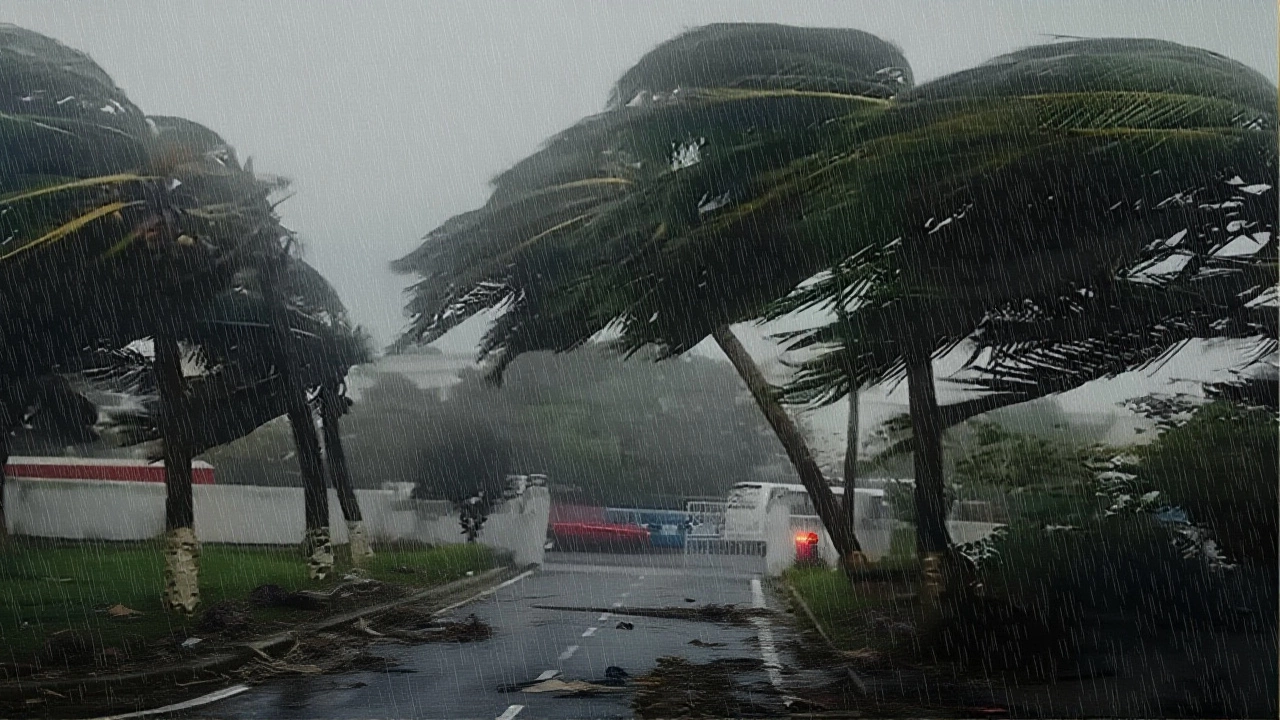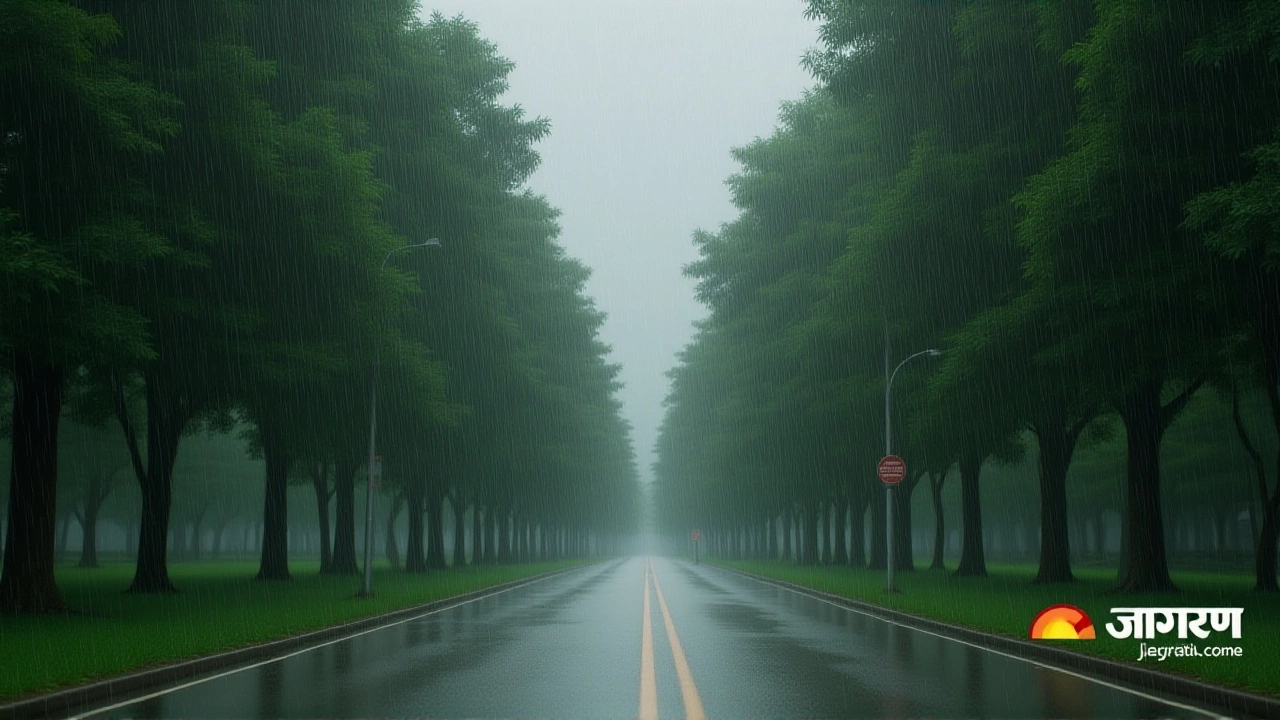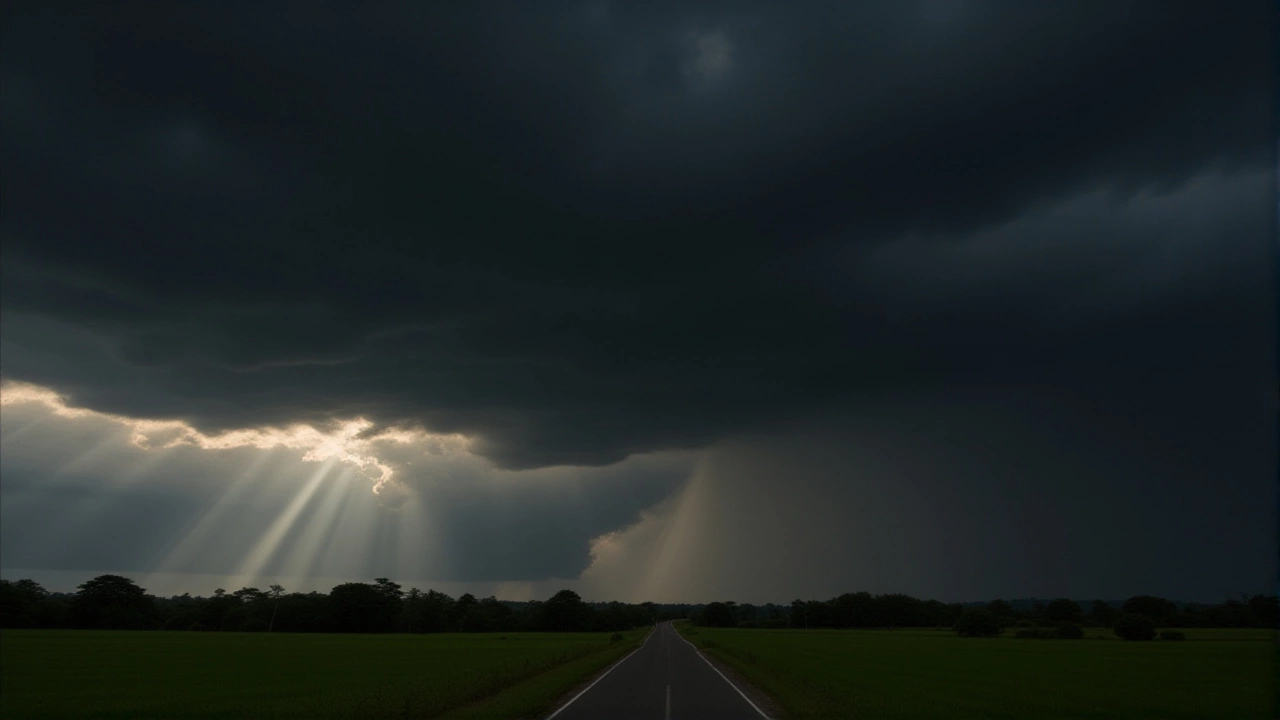Starting October 9, 2025, Shimla—the hill capital of Himachal Pradesh—will enter a volatile weather phase, with the India Meteorological Department (IMD) issuing a yellow alert for thunder and lightning. It’s not the kind of autumn chill tourists expect when the deodars turn gold and the air turns crisp. This year, the seasonal transition carries a warning: sudden storms could strike without warning, disrupting travel, damaging power lines, and putting hikers at risk in the steep, narrow valleys that define this mountain city.
What the Forecast Actually Shows
On October 28, 2025, Shimla’s skies will be partly cloudy, temperatures hovering between +7°C at dawn and +20°C by mid-afternoon. The atmospheric pressure will dip slightly to 595–600 mm Hg, and humidity will swing from 46% to 81%. Winds will be gentle—southwesterly at 2 m/s—with gusts matching that speed. But here’s the catch: the ultraviolet index is forecast at 8, which is ‘very high.’ That means even on a cloudy day, sunburn is a real threat. Locals know this already—sunscreen isn’t optional here, even in October.
By October 30, the skies clear further, with no rain expected. Temperatures remain steady: +8°C to +20°C. But that calm is deceptive. The IMD’s yellow alert, triggered on October 9, signals a pattern shift. Historically, October in Shimla averages 3 to 8 rainy days, with 35–54 mm of rainfall. This year, those rains may come not as drizzle, but as violent downpours accompanied by lightning.
Why This Matters to Tourists and Locals
Shimla draws over 1.2 million visitors each October. Families flock to Christ Church, honeymooners wander the Mall Road, and trekkers head toward the Viceregal Lodge and Kalibari Temple. But mountain weather doesn’t follow schedules. A sudden thunderstorm can turn a scenic trail into a mudslide risk. Power outages are common during such events, and cell service often drops in the higher reaches.
“We’ve seen this before,” says Dr. Anjali Mehta, a climatologist with the IMD’s regional office in Shimla. “In 2019, a similar yellow alert led to three lightning-related fatalities in the Kufri area. This year, the atmospheric instability is higher than average due to lingering moisture from the monsoon retreat.”
Meanwhile, Cyclone Montha—expected to make landfall between Machilipatnam and Kalingapatnam on October 28—isn’t directly affecting Shimla. But meteorologists say its outer bands may be nudging the jet stream, contributing to the unusual electrical activity in the Western Himalayas. It’s not the cyclone itself, but its ripple effect.

The Bigger Picture: Climate Shifts in the Hills
October temperatures in Shimla have averaged 12.7°C over the past decade, with daytime highs near 18°C. This year’s range—3.9°C to 25°C—is wider than normal. That volatility is a red flag. Climate models from the Indian Institute of Tropical Meteorology show that hill stations like Shimla are warming faster than the national average, and extreme weather events are increasing by 18% since 2015.
What used to be predictable autumn weather—crisp mornings, sunny afternoons, occasional drizzle—is becoming erratic. The number of thunderstorm days in October has doubled in the last 15 years. And with tourism accounting for nearly 40% of Shimla’s economy, disruptions aren’t just inconvenient—they’re financially dangerous.
What Comes Next
The yellow alert remains active until October 15, 2025, but the IMD warns that the risk of thunderstorms could persist into early November. Residents are being urged to secure loose objects, avoid open fields during storms, and keep emergency kits ready. Tour operators are updating itineraries to avoid high-risk trails during midday hours, when lightning strikes are most common.
Shimla’s municipal corporation has activated its disaster response team, coordinating with local hospitals and the Himachal Pradesh Police. Schools in higher-altitude zones have been instructed to delay outdoor activities until further notice.

Why Shimla’s Weather Is So Unpredictable
Shimla sits at 2,206 meters above sea level, nestled in the outer Himalayas. Its weather is shaped by the collision of warm, moist air from the plains and cold, dry air descending from the peaks. This creates a natural instability—especially in October, when the monsoon’s moisture lingers just long enough to feed storms, but the cold front is already moving in.
Historically, October was the calm before winter. Now, it’s the calm before the storm. The city’s famed 11.9 hours of daily sunlight still make it a beautiful destination—but that beauty now comes with a caveat: respect the sky.
Frequently Asked Questions
How dangerous are thunderstorms in Shimla compared to other Indian cities?
Thunderstorms in Shimla are more hazardous than in plains cities because of the terrain. Lightning strikes are more likely to hit elevated structures, and landslides triggered by heavy rain can block roads instantly. Between 2018 and 2024, Himachal Pradesh recorded 27 lightning-related deaths—nearly double the national average per capita. Unlike urban areas, rural and tourist trails lack lightning rods and safe shelters.
What should tourists do if caught in a thunderstorm while hiking?
If caught outdoors, avoid open ridges, tall trees, and metal objects. Seek lower ground and crouch on your feet with minimal contact with the earth. Do not lie flat. Most accidents happen when people take shelter under isolated trees or near stone walls. The IMD recommends downloading the ‘Meghdoot’ app for real-time alerts and sticking to marked trails with nearby shelters.
Why is the UV index so high in October when it’s cooler?
At higher altitudes, the atmosphere is thinner, offering less protection from UV radiation. Even with cloud cover, up to 80% of UV rays penetrate. Shimla’s elevation—over 2,200 meters—means UV levels are comparable to tropical beaches. An index of 8 can cause sunburn in under 15 minutes. Locals wear hats and apply sunscreen daily, even in winter.
Is this weather pattern linked to climate change?
Yes. Studies from the Indian Institute of Tropical Meteorology show Himalayan regions are warming 0.3°C faster than the global average. Warmer air holds more moisture, leading to more intense rainfall and electrical storms during seasonal transitions. October thunderstorms, once rare, are now occurring nearly every other year. This isn’t an anomaly—it’s a trend.
How long will the yellow alert last, and what’s the next step?
The yellow alert is active until October 15, but the IMD says the risk of thunderstorms may extend into early November. Residents should monitor daily forecasts via the IMD website and local radio. The Himachal Pradesh government has promised to install 50 new lightning detection sensors in high-risk zones by December, funded by a ₹2.3 crore central grant. Tourists should check with hotels for updated safety protocols.
Are there any travel restrictions in place?
No formal travel bans exist, but the tourism department has issued advisories against solo treks to Jakhoo Hill, Kufri, and Naldehra between 1 p.m. and 6 p.m. during the alert period. Many tour operators are offering flexible cancellations. The Shimla airport has not reported delays yet, but ground crews are on standby for potential lightning-related disruptions to runway operations.
